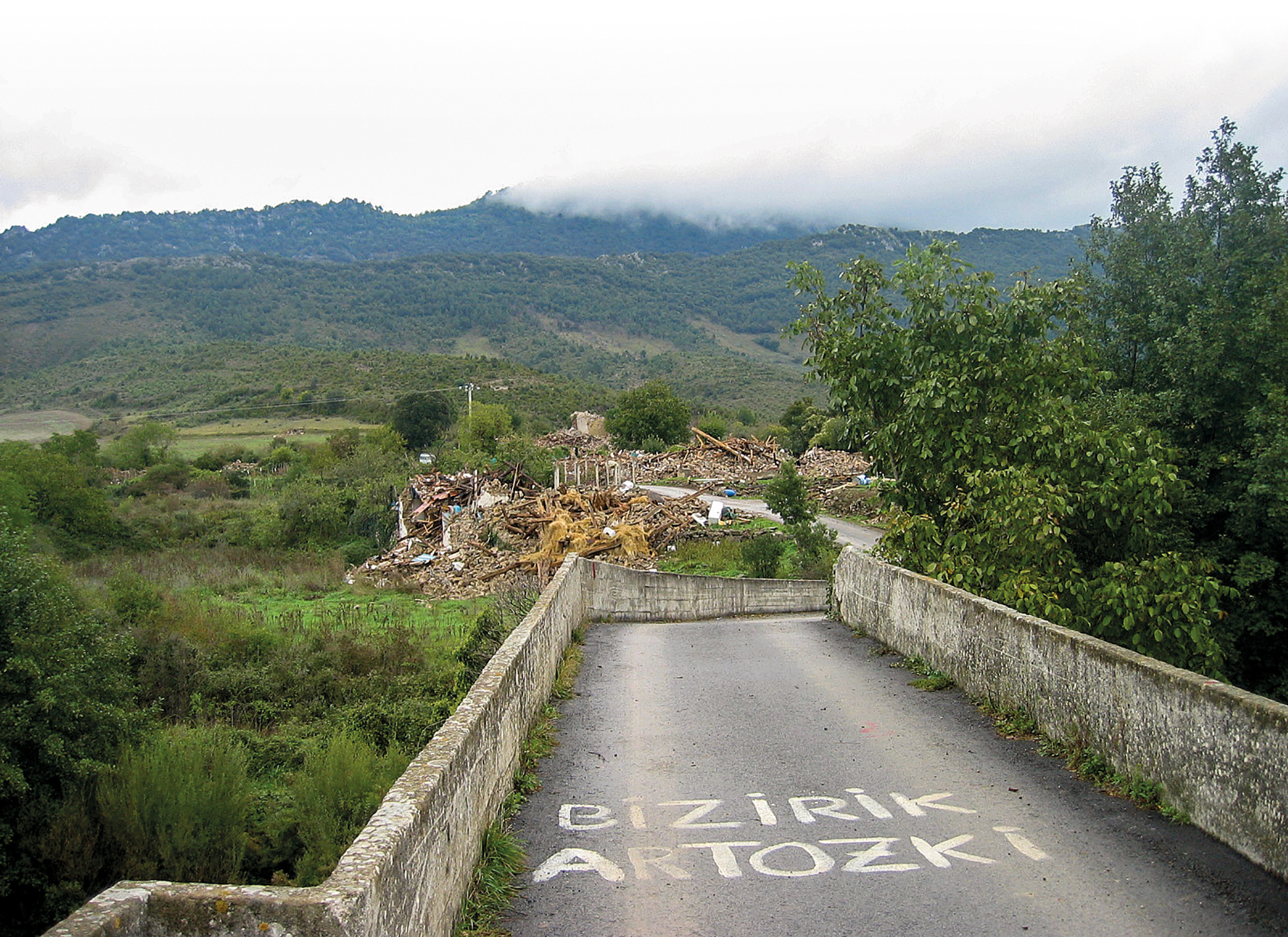Arthoz resistance 20 years
- Artozki (Navarra) is one of the localities under the Itoiz reservoir. It was emptied in 2003 along with six other towns, by the construction of the reservoir, but until the last moment it was defended by the members of Solidarity with Itoiz. It took the foral police and the civilian guard two weeks to empty the village and demolish the buildings. Months earlier resistance was organised in Itoitz.

The fight against the Itoiz reservoir became at the end of the twentieth century and the beginning of XXI.aren a symbol of land and the environment. His name comes from one of the underwater villages. In fact, seven villages in the area were demolished and submerged to build the reservoir. Along with Itoiz, the villages of Orbaitz, Ezkai, Muniain, Gorritz, Artzi, much of Nagore and Artozki were submerged.
It is currently the largest reservoir in Navarre, located in the vegas of Artze and Lónguida, and has its main dam on the Irati River.
The project was reported in 1985 and opinions against it soon emerged. That same year, the Itoiz Coordinator was set up in order not to build the reservoir.
The works of the Itoiz reservoir began in 1993 and the dam had been executed by 2003. It is the year in which the eviction of the localities mentioned begins. However, the population did not give way to excavators. They strongly defended accommodation, especially Itoiz and Artoz. On the first came the machines on 16 June, together with the Foral Police and the Civil Guard. Dozens of people resisted and took three days to expel everyone and demolish buildings.
In defense of Artozki, for two weeks
On 15 September resistance moved to Arthoz 20 years ago. Artozki's defense lasted two weeks until he was brutally fired by the Foral Police and the Civil Guard.
The Government of Navarra stated that Artozko's neighbours voluntarily left their homes. It didn't. It is true that with the Government of Navarra they agreed on 15 September to leave the houses, because that was the only way to buy the land of Nago and Azparren afterwards.
To deny the government's version, neighbors signed a statement: “None of the six families we lived in Arthoz has reached an agreement with the Government of Navarra. All property of families has been violently expropriated.”
Although the families had to leave the houses, the witness they gave to the supporters. The entrepreneurs entered the homes two days before the order of the scare, in which families and solidarity lived.
Julio Villanueva was part of the Elkartasuna group with Itoiz at that time, but was not present in the days of eviction of the peoples. In fact, in 1996, I was under the search and capture orders for cutting the reservoir cables along with seven other members. This action interrupted construction for ten months. However, although resistance was not in the villages during the days, it was dedicated to preparation. “We think of a strategy for the resistance of peoples.”
Monthly preparations
Solidarity workers spent months preparing them, starting in the winter of 2002 and 2003. They prepared Artozko's first, although Itoiz was emptied earlier. To introduce the pipes and be able to chain them, closures were made on walls and windows, bunkers were prepared...
The emptying operations were not surprised, the machines and the police were in their place of arrival. Villanueva says they took the download “to the end”. “It was very dangerous for entrepreneurs: they started throwing the wall violently and throwing stones on them.”
Intermediaries were appointed to carry out the communication between the police and the resisters: “Mediators told them there were hidden people, but the police didn’t listen. They were telling the workers to come in and crush everything. The hidden ones had to leave their hiding places, which were in grave danger.” Mediators were also beaten several times.
From "emptying" to "rescue"
The police also changed the status of their intervention: what was initially a “emptying” of the peoples, they called it “rescue”. “People rescued in a rescue can die, so if someone is seriously injured or killed they could have given that reason. That’s how they were protected.”
The theme of Itoiz, besides in the Basque Country, was internationally recognized. The actions of the Itoiz Coordinator and the Itoiz Elkartasuna Group had a major impact. “The response of society was strong, people were very conscious at the time.”
Preparation for the anniversary
On the occasion of the twentieth anniversary of the resistance of the peoples of Itoiz and Artozki, a round table and an event are scheduled to be held in October. They will be made known in the coming weeks. They want to match the struggle with the memory. “It will not be a nostalgic celebration, but an appeal to struggle. We have to organize and fight harder than ever for the earth.”










